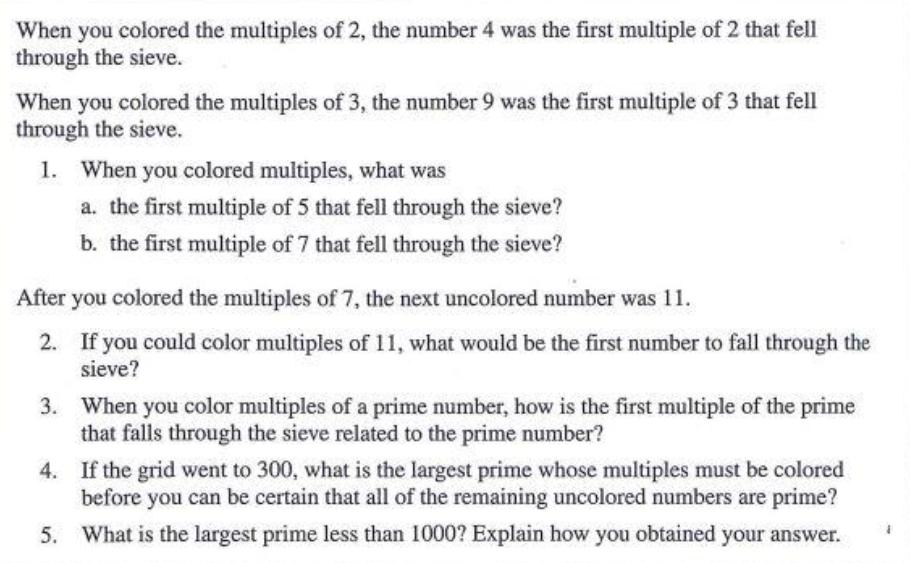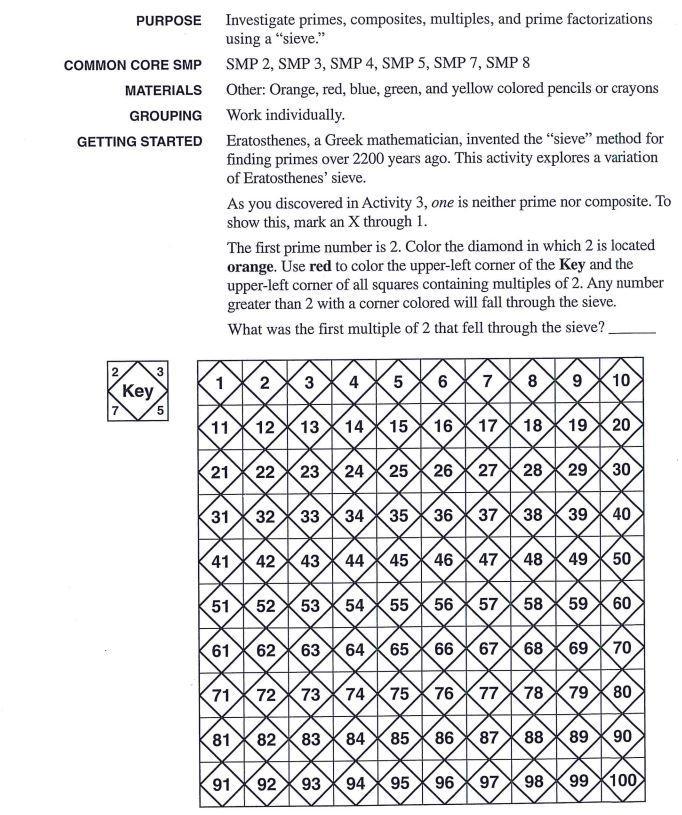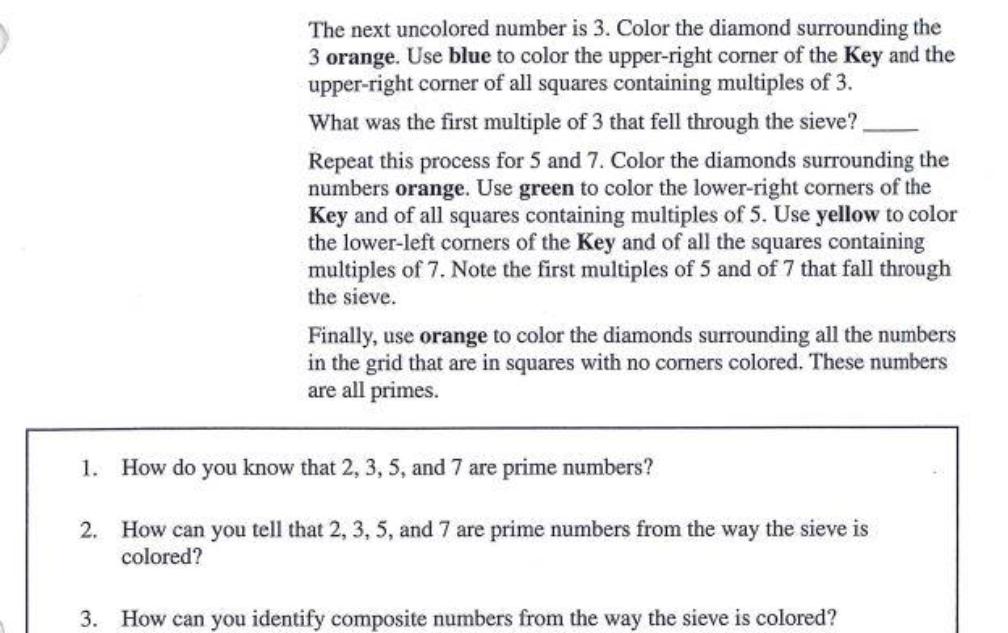Answered step by step
Verified Expert Solution
Question
1 Approved Answer
When you colored the multiples of 2, the number 4 was the first multiple of 2 that fell through the sieve. When you colored



When you colored the multiples of 2, the number 4 was the first multiple of 2 that fell through the sieve. When you colored the multiples of 3, the number 9 was the first multiple of 3 that fell through the sieve. 1. When you colored multiples, what was a. the first multiple of 5 that fell through the sieve? b. the first multiple of 7 that fell through the sieve? After you colored the multiples of 7, the next uncolored number was 11. 2. If you could color multiples of 11, what would be the first number to fall through the sieve? 3. When you color multiples of a prime number, how is the first multiple of the prime that falls through the sieve related to the prime number? 4. If the grid went to 300, what is the largest prime whose multiples must be colored before you can be certain that all of the remaining uncolored numbers are prime? 5. What is the largest prime less than 1000? Explain how you obtained your answer. PURPOSE Investigate primes, composites, multiples, and prime factorizations using a "sieve." SMP 2, SMP 3, SMP 4, SMP 5, SMP 7, SMP 8 Other: Orange, red, blue, green, and yellow colored pencils or crayons Work individually. COMMON CORE SMP MATERIALS GROUPING GETTING STARTED 2 Key 3 5 Eratosthenes, a Greek mathematician, invented the "sieve" method for finding primes over 2200 years ago. This activity explores a variation of Eratosthenes' sieve. As you discovered in Activity 3, one is neither prime nor composite. To show this, mark an X through 1. The first prime number is 2. Color the diamond in which 2 is located orange. Use red to color the upper-left corner of the Key and the upper-left corner of all squares containing multiples of 2. Any number greater than 2 with a corner colored will fall through the sieve. What was the first multiple of 2 that fell through the sieve? 21 11 12 13 14 31 2 51 61 22 32 3X45X6X7X8X9X10 41 42 43 52 62 23 24 44 15 33 34 35 36 37 38 71 72 73 74 81 82 83 84 91 92 93 25 45 F 16 17 18 19 20 26 27 28 29 30 46 5354 55 56 57 58 63 64 65 67 68 94 95 66 47 X 76 77 96 48 97 78 79 80 85 86 87 88 89 90 99 100 39 40 98 49 50 5960 69 70 The next uncolored number is 3. Color the diamond surrounding the 3 orange. Use blue to color the upper-right corner of the Key and the upper-right corner of all squares containing multiples of 3. What was the first multiple of 3 that fell through the sieve? Repeat this process for 5 and 7. Color the diamonds surrounding the numbers orange. Use green to color the lower-right corners of the Key and of all squares containing multiples of 5. Use yellow to color the lower-left corners of the Key and of all the squares containing multiples of 7. Note the first multiples of 5 and of 7 that fall through the sieve. Finally, use orange to color the diamonds surrounding all the numbers in the grid that are in squares with no corners colored. These numbers are all primes. 1. How do you know that 2, 3, 5, and 7 are prime numbers? 2. How can you tell that 2, 3, 5, and 7 are prime numbers from the way the sieve is colored? 3. How can you identify composite numbers from the way the sieve is colored?
Step by Step Solution
★★★★★
3.42 Rating (161 Votes )
There are 3 Steps involved in it
Step: 1
1 a The first multiple of 5 that fell through the sieve is 25 b The first multiple of 7 that fell th...
Get Instant Access to Expert-Tailored Solutions
See step-by-step solutions with expert insights and AI powered tools for academic success
Step: 2

Step: 3

Ace Your Homework with AI
Get the answers you need in no time with our AI-driven, step-by-step assistance
Get Started


